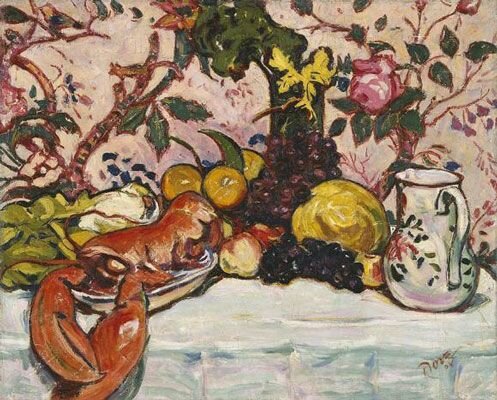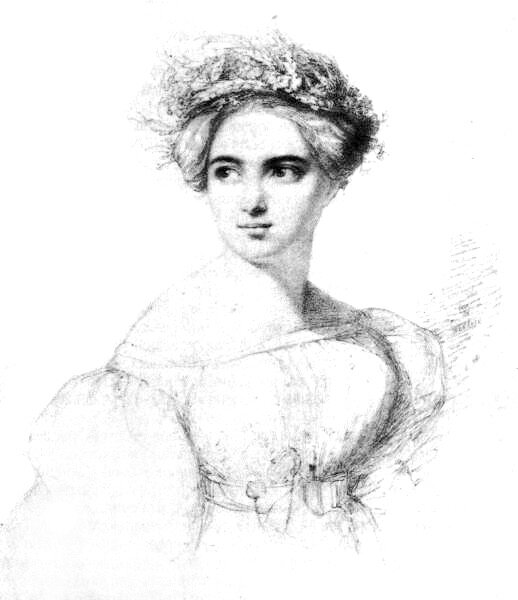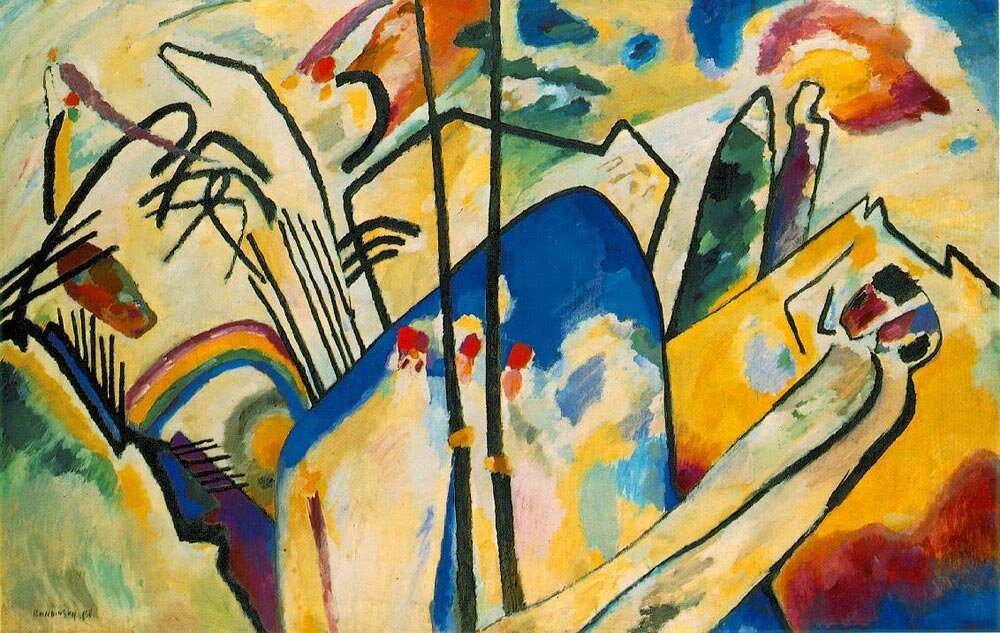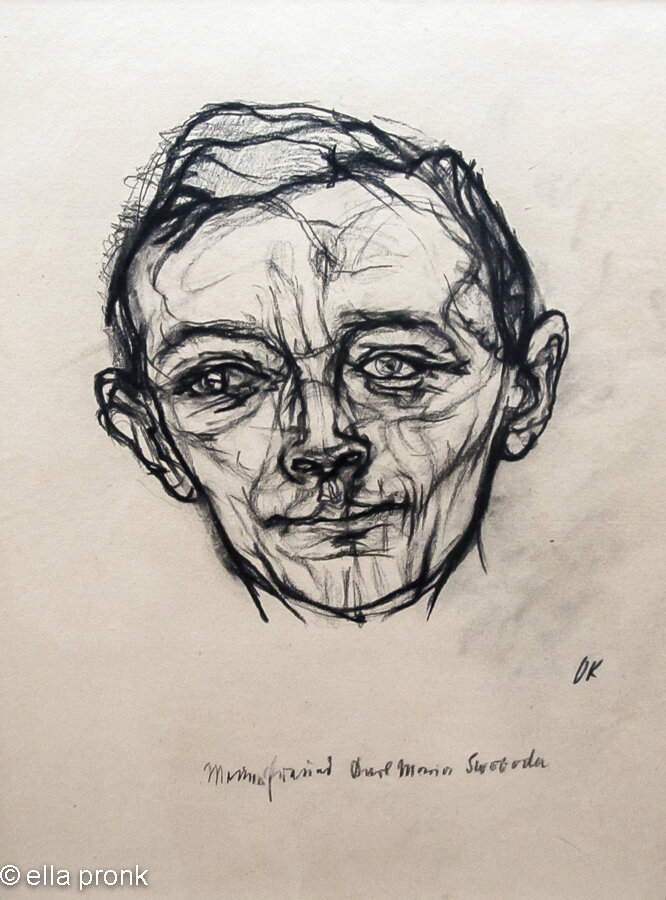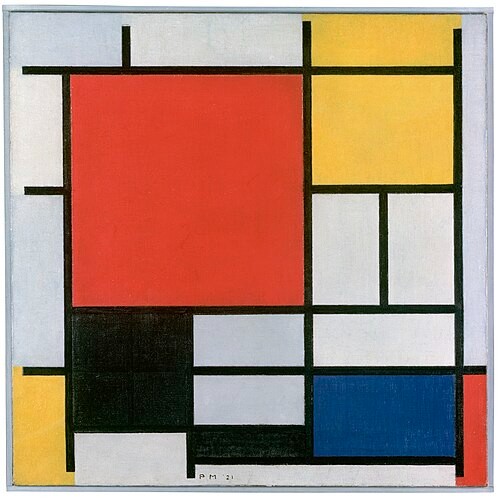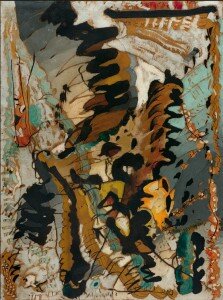
Dove: Irving Berlin – An Orange Grove in California (1927) (Museo Nacional Thyssen-Bornemisza, Madrid)
Irving Berlin (188-1889) was one of the most prolific of American song composer, with hundred to his credit. The songwriter Jerome Kern, when asked what place Berlin had in American music famously replied with “Irving Berlin has no place in American music—he is American music’.

Dove: Improvisation (1927) (Andrew Crispo Gallery, New York)
Given the music’s title, it’s not surprising to find that the principal colour used is orange, but at the same time, the ripples and zigzag motions give us the life and rhythm of the music. You could also read the brassy quality of Whiteman’s recording into the orange and yellow colours of the painting.
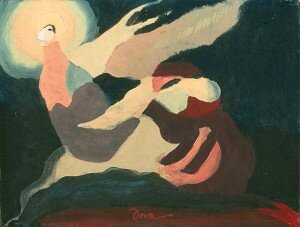
Dove: “The Moon Was Laughing At Me” (1937)
Rhythm Rag was recorded by Whiteman in 1925, with his typical brassy sound. Whiteman sought to codify improvisation, which to many jazz players was the heart of the musical style. To one jazz player, Whiteman’s efforts to regulate or orchestrate was akin to trying ‘to make a lady’ out of a wild outsider music.
These were not the only paintings that Arthur Dove did with music as the inspiration. Between 1913 and 1944, he did some 17 paintings based on music. Two other works, “The Moon Was Laughing At Me” (1937) and “Me and the Moon” (1937) were part of what he called his “Radio Collection,” based on recordings he’d heard on the radio.
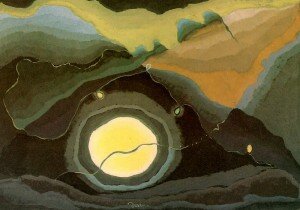
Dove: “Me and the Moon,” (1927) (Phillips Collection, Washington, DC)
The second painting, “Me and the Moon,” was based on the song of the same name recorded by Hal Kemp and his Orchestra. A slower song, it tells the story of searching, with the help of the moon, for a lost lover.
The first of the radio works was written while Dove’s wife, the modernist painter Helen ‘Reds’ Torr, was away on a family emergency. What was supposed to be a stay of 2 weeks extended for 3 months, the longest time the couple had been separated. The second work was painted after her return. Dove clearly found in the lyrics something that represented his own feelings of loss.
The Gershwin paintings, the Berlin paintings, the Whiteman paintings and the two radio paintings show Dove’s unique response to music in his art. Dove spoke of his paintings as ‘music for the eyes.’ No other modern artist has reflected so deeply as Dove on the music around him.

